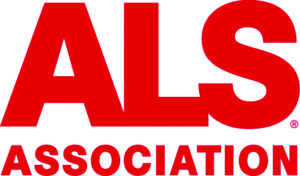WASHINGTON, Oct. 27, 2016 /PRNewswire-USNewswire/ -- Last week, regenerative medicine investigators at Cedars-Sinai Medical Center in Los Angeles, Calif. received approval from the U.S. Food and Drug Administration (FDA) to test a combination stem cell-gene therapy in a clinical trial designed to test the safety of this therapeutic approach, supported by The ALS Association since 2003, to potentially stall the progression of amyotrophic lateral sclerosis (ALS). This study is the first clinical trial to use neural stem cells to deliver GDNF for ALS, an approach developed by Clive Svendsen, Ph.D., from Cedars-Sinai. It will be conducted at the ALS clinic at Cedars-Sinai Medical Center and led by Robert Baloh, M.D., Ph.D. and Peggy Allred, P.T., D.P.T. and the neurosurgical team will be led by J. Patrick Johnson, M.D., M.S.
The ALS Association in partnership with the Wisconsin Chapter supported this study from its inception in 2003 and for many years to develop the preclinical studies to provide proof of principle that this approach would be feasible as a treatment for ALS. The Neil Brourman, M.D. ALS Research Fund of The ALS Association also provided significant support. Further development and studies required for FDA approval was funded by a $16.8 million grant from the California Institute of Regenerative Medicine (CIRM). The ALS Association actively advocated for Proposition 71 in 2004, which lead to the creation of CIRM in California.
ALS is a progressive neurodegenerative disease that affects nerve cells in the brain and the spinal cord. Eventually, people with ALS lose the ability to initiate and control muscle movement, which leads to total paralysis and death, usually within two to five years of diagnosis. For unknown reasons, veterans are twice as likely to develop ALS as the general population. There is no cure, and only one drug approved by the U.S. Food and Drug Administration (FDA) modestly extends survival.
The study entails a combined stem cell and gene therapy approach. The stem cells are specifically engineered to produce an important protein called, glial cell line derived neurotrophic factor (GDNF). GDNF is a trophic factor known to protect motor neurons. Motor neurons transfer signals from the brain to the muscles, allowing muscle movement. They are also a type of cell that dies in ALS. These motor neurons are surrounded by support cells that provide nutrients promoting motor neuron health and function.
Previous research studies have demonstrated that when support cells get sick, they are no longer able to provide the necessary nutrients, resulting in motor neuron death. Based on preclinical studies, investigators hope that these stem cells when introduced into the spinal cord will secrete the trophic factor and surround the motor neurons keeping them alive.
According to Cedar-Sinai's latest press release, this novel trial testing the safety of this combination stem cell-gene therapy could start by the end of this year. The trial will be conducted over a one year period and will enroll 18 patients to receive the investigational drug. Eligibility requires that patients are currently experiencing ALS-caused weakness in their legs. It is common for ALS patients to progressively lose leg strength over the course of disease and usually both legs lose strength at the same time.
Stem cell implantations will be placed directly into one side the lumbar region of the spinal cord that controls movement on only one side of the body. Neither the patients nor physicians will know which side of the spinal cord received the injections.
Investigators will record muscle strength, along with safety outcomes. It is important to note that this is a small safety trial to ensure the stem cells releasing GDNF do not have negative effects on leg function. If the trial is proven safe, investigators plan on expanding the trial to understand if this therapy improves leg strength on the side of the stem cell injection.
Patients seeking information about trial enrollment should call 1-310-423-1791.
"Jeff Kaufman, who lost his battle with ALS, was my inspiration to start this work back in 2003 and The ALS Association Wisconsin Chapter provided the initial funding," said Clive Svendsen, Ph.D., Director of Cedars-Sinai Board of Governors Regenerative Medicine Institute, who originally developed this combined gene therapy approach. "Through the Evening of Hope dinners every year, The ALS Association tirelessly fought for funding to keep this project going to the point where we could apply to CIRM to take it to the clinic. Jim Barber, who lost his battle with ALS less than a year ago and his wife Cheryl lobbied for the trial at the CIRM meeting all those years ago."
"I am delighted to see this study finally move into clinical trials after the many years of our support and the tireless commitment of Dr. Svendsen and his team who continued to move the study forward and overcome the hurdles along the way to develop a product that has the biggest chance of success," said Lucie Bruijn, Ph.D., M.B.A., Chief Scientist of The ALS Association. "This therapy approach holds great promise as a potential ALS therapy based on the preclinical studies and I look forward to seeing the initial safety results of this trial."
About The ALS Association
The ALS Association is the only national non-profit organization fighting Lou Gehrig's Disease on every front. By leading the way in global research, providing assistance for people with ALS through a nationwide network of chapters, coordinating multidisciplinary care through certified clinical care centers, and fostering government partnerships, The Association builds hope and enhances quality of life while aggressively searching for new treatments and a cure. For more information about The ALS Association, visit our website at www.alsa.org.
Logo - http://photos.prnewswire.com/prnh/20131211/MM32178LOGO
SOURCE The ALS Association
Related Links
WANT YOUR COMPANY'S NEWS FEATURED ON PRNEWSWIRE.COM?
Newsrooms &
Influencers
Digital Media
Outlets
Journalists
Opted In




Share this article